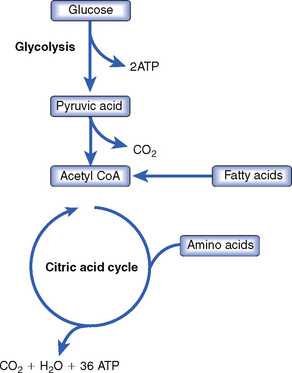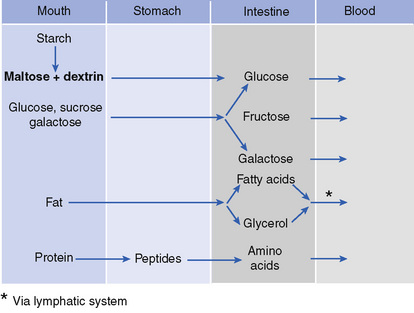21 Digestion and metabolism
The anatomy of the digestive tract was considered in Chapter 19. The aim of the present chapter is to consider the chemical breakdown (digestion) of individual foodstuffs and their subsequent use in metabolism to provide energy and structural components for the body.
The digestion of the major sources of nutrition – carbohydrate, fat and protein – is dealt with in the following sections, and the interrelated nature of their metabolism in a subsequent section (Figs 21.1 and 21.2).

Fig. 21.2 Metabolism. ATP, adenosine triphosphate; CO2, carbon dioxide; CoA, coenzyme A; H2O, water.
< div class='tao-gold-member'>
Only gold members can continue reading. Log In or Register to continue




